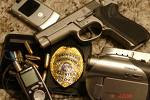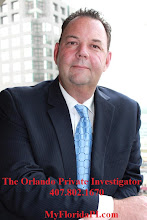
Tips for Parents: The Truth About Club Drugs
What Are Raves?
"Raves" are high energy, all-night dances that feature hard pounding techno-music and flashing laser lights. Raves are found in most metropolitan areas and, increasingly, in rural areas throughout the country. The parties are held in permanent dance clubs, abandoned warehouses, open fields, or empty buildings.
Raves are frequently advertised as "alcohol free" parties with hired security personnel. Internet sites often advertise these events as "safe" and "drug free." However, they are dangerously over crowded parties where your child can be exposed to rampant drug use and a high-crime environment. Numerous overdoses are documented at these events.
Raves are one of the most popular venues where club drugs are distributed. Club drugs include MDMA (more commonly known as "Ecstasy"), GHB and Rohypnol (also known as the "date rape" drugs), Ketamine, Methamphetamine (also known as "Meth"), and LSD.
Because some club drugs are colorless, odorless, and tasteless, they can be added without detection to beverages by individuals who want to intoxicate or sedate others in order to commit sexual assaults.
Rave promoters capitalize on the effects of club drugs. Bottled water and sports drinks are sold at Raves, often at inflated prices, to manage hyperthermia and dehydration. Also found are pacifiers to prevent involuntary teeth clenching, menthol nasal inhalers, surgical masks, chemical lights, and neon glow sticks to increase sensory perception and enhance the Rave experience.
Cool down rooms are provided, usually at a cost, as a place to cool off due to increased body temperature of the drug user.
Don't risk your child's health and safety. Ask questions about where he or she is going and see it for yourself.
What Are Club Drugs?
1) Methylenedioxymethamphetamine (MDMA)
Street names: Ecstasy, E, X, XTC, Adam, Clarity, Lover's Speed
An amphetamine-based, hallucinogenic type drug that is taken orally, usually in a tablet or capsule form.
Effects:
Lasts 3-6 hours.
Enables dancers to dance for long periods of time.
Increases the chances of dehydration, hyper tension, heart or kidney failure, and increased body temperature, which can lead to death.
Long-term effects include confusion, depression, sleep problems, anxiety, paranoia, and loss of memory.
2) Gamma-hydoxybutyrate (GHB)
Street names: Grievous Bodily Harm, G, Liquid Ecstasy, Georgia Home Boy
A central nervous system depressant that is usually ingested in liquid, powder, tablet, and capsule forms.
Effects:
May last up to 4 hours, depending on the dose used.
Slows breathing and heart rates to dangerous levels.
Also has sedative and euphoric effects that begin up to 10-20 minutes from ingestion.
Use in connection with alcohol increases its potential for harm.
Overdose can occur quickly-sometimes death occurs.
3) Methamphetamine
Street names: Speed, Ice, Chalk, Meth, Crystal, Crank, Fire, Glass
A central nervous system stimulant, often found in pill, capsule, or powder form, that can be snorted, injected, or smoked.
Effects:
Displays signs of agitation, excited speech, lack of appetite, and increased physical activity.
Often results in drastic weight loss, violence, psychotic behavior, paranoia, and sometimes damage to the heart or nervous system.
4) Ketamine
Street names: Special K, K, Vitamin K, Cat Valium
An injectable anesthetic used primarily by veterinarians, found either in liquid form or as a white powder that can be snorted or smoked, sometimes with marijuana.
Effects:
Causes reactions similar to those of PCP, a hallucinatory drug.
Results in impaired attention, learning, and memory function. In larger doses, it may cause delirium, amnesia, impaired motor function, high blood pressure, and depression.
5) Rohypnol
Street names: Roofies, Rophies, Roche, Forget-me Pill
Tasteless and odorless sedative, easily soluble in carbonated beverages, with toxic effects that are aggravated by concurrent use of alcohol.
Effects:
Can cause anterograde amnesia, which contributes to Rohypnol's popularity as a "date rape" drug.
Can cause decreased blood pressure, drowsiness, visual disturbances, dizziness, and confusion.
6) Lysergic Acid Diethylamide (LSD)
Street names: Acid, Boomers, Yellow Sunshines
Hallucinogen that causes distortions in sensory perception, usually taken orally either in tablet or capsule form. Often sold on blotter paper that has been saturated with the drug.
Effects:
Are often unpredictable and may vary depending on dose, environment, and the user.
Causes dilated pupils, higher body temperature, increased heart rate and blood pressure, sweating, dry mouth, and tremors.
Can cause numbness, weakness, and nausea.
Long-term effects may include persistent psychosis and hallucinogenic persisting perception disorder, commonly known as "flashbacks."
Know the Signs
Effects of stimulant club drugs, such as MDMA and Methamphetamine:
Increased heart rate
Convulsions
Extreme rise in body temperature
Uncontrollable movements
Insomnia
Impaired speech
Dehydration
High blood pressure
Grinding teeth
Effects of sedative/hallucinogenic club drugs, such as GHB, Ketamine, LSD, and Rohypnol:
Slow breathing
Decreased heart rate (Except LSD)
Respiratory problems
Intoxication
Drowsiness
Confusion
Tremors
Nausea
Effects common to all club drugs can include anxiety, panic, depression, euphoria, loss of memory, hallucinations, and psychotic behavior. Drugs, traces of drugs, and drug paraphernalia are direct evidence of drug abuse. Pacifiers, menthol inhalers, surgical masks, and other such items could also be considered indicators.






No comments:
Post a Comment